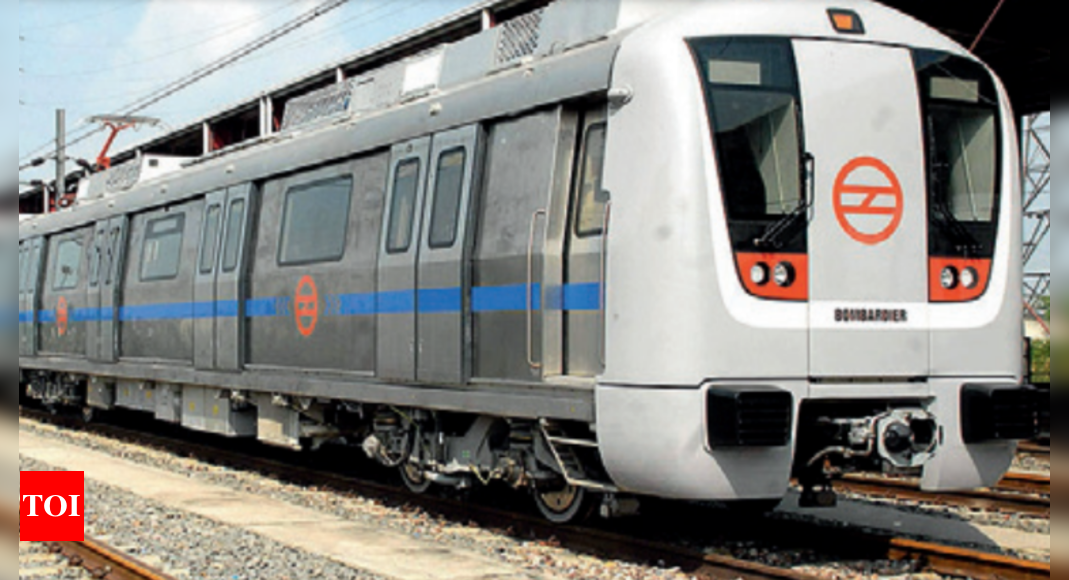[ad_1]
NEW DELHI: A survey of Metro rail commuters in Delhi, Bengaluru and Nagpur has revealed that poor access or last mile connectivity is responsible for lower-than planned ridership in these high capital-intensive transport systems. It has also found that while over 70% of the metro rail commuters walk or cycle to reach a station in Nagpur, in Delhi it’s barely 39% and in Bengaluru (66%).
Delhi has the highest share of passengers using low capacity shared mode of transport such as e-rickshaw and Grameen Sewa vehicles. In all three survey cities, walking and shared modes constitute over 75% of the total last-mile mode-share, which indicates that low cost, shared services and pedestrian infrastructure play a key role in last-mile connectivity for Metro users.
The working paper on ‘Improving Metro Access System’ published by the WRI India and Toyota Mobility Foundation (TMF) has recommended that transport planners must understandthe demand on the last-mile corridor and the last-mile vehicle service capacities must be aligned with this demand to offer financially viable high frequency services.
The report said, “Highcapacity feeder buses are not always the right option. ”
The survey also found that commuters, particularly women, are highly averse to waiting for a last-mile service beyond 10 minutes and this should be considered while planning end to end connectivity. As per the report, women pay more to access the Metro even as they travel shorter last-mile distances than men. “Aversion to waiting makes some women choose more expensive, faster last-mile modes,” it said.
The paper emphasises theimportance of high-frequency services when planning shared last-mile connectivity options. It also indicates that existing fare structures empirically place a disadvantage on women as they tend to travel shorter distances, leading to higher fares.
“Not all cities are the same, and not all catchment areas around a metro station are the same. The types of commuters are different. Their travel patterns and mobility needs are different. Understanding this diversity is critical to understand the best way to seamlessly integrate first and last-mile mobility into the metro journey,” said Pras Ganesh, TMF executive programme director (Asia region). He said appropriately grasping these critical insights, the working paper serves as a call to action for policymakers, urban planners, and stakeholders in the transportation sector to adjust the key parameters that drive the metro journey, including journey information, booking services, hardware and software used for first and last mile and seamless payment methods.
Delhi has the highest share of passengers using low capacity shared mode of transport such as e-rickshaw and Grameen Sewa vehicles. In all three survey cities, walking and shared modes constitute over 75% of the total last-mile mode-share, which indicates that low cost, shared services and pedestrian infrastructure play a key role in last-mile connectivity for Metro users.
The working paper on ‘Improving Metro Access System’ published by the WRI India and Toyota Mobility Foundation (TMF) has recommended that transport planners must understandthe demand on the last-mile corridor and the last-mile vehicle service capacities must be aligned with this demand to offer financially viable high frequency services.
The report said, “Highcapacity feeder buses are not always the right option. ”
The survey also found that commuters, particularly women, are highly averse to waiting for a last-mile service beyond 10 minutes and this should be considered while planning end to end connectivity. As per the report, women pay more to access the Metro even as they travel shorter last-mile distances than men. “Aversion to waiting makes some women choose more expensive, faster last-mile modes,” it said.
The paper emphasises theimportance of high-frequency services when planning shared last-mile connectivity options. It also indicates that existing fare structures empirically place a disadvantage on women as they tend to travel shorter distances, leading to higher fares.
“Not all cities are the same, and not all catchment areas around a metro station are the same. The types of commuters are different. Their travel patterns and mobility needs are different. Understanding this diversity is critical to understand the best way to seamlessly integrate first and last-mile mobility into the metro journey,” said Pras Ganesh, TMF executive programme director (Asia region). He said appropriately grasping these critical insights, the working paper serves as a call to action for policymakers, urban planners, and stakeholders in the transportation sector to adjust the key parameters that drive the metro journey, including journey information, booking services, hardware and software used for first and last mile and seamless payment methods.
[ad_2]
Source link











More Stories
Congress replaces Kamal Nath, names an OBC as Madhya Pradesh chief | India News
Fire breaks out in ITBP camp in Srinagar; none hurt | India News
Parliament Security: Co-villagers give clean chit to Lalit Jha, parents to move court | India News